Once you have created your website and have some content up, it is ready for the internet. But how do you help new and returning customers find your site? How do you send my website to search engines? Users no longer type in a business’s URL; instead, they search for products and solutions to their problems. Most of your web traffic will come from search engines, so your entire site must be available on the most relevant search engines.
Why I Should Submit My Site to Search Engines
Google and other search engines periodically crawl the web, see what’s out there and index it. Indexing is the process by which a search engine decides what keywords your site will rank for and how high it will rank for those keywords.
In most cases, search engines will find your website. However, there is no guarantee from Google or any other search engine that they will definitely find your site. If you have a new site, it likely doesn’t have links from any other sites on the web, making it more difficult for Google to find it.
So, it’s best to send your website to search engines. This process lets the bots that crawl the web know that your site is there and needs to be indexed.
If you submit your site to search engines, it also lets them know which pages are the most important on your site. If you have new content, you can submit the individual URL to make sure that it gets crawled and indexed.
As a final benefit, when you submit a url to search engines, there will usually be some analytics and site health measures to let you know if there are any errors on your website or if anything is affecting your search engine optimization (SEO).
Definition box: “What are bots that crawl the web? A web crawler, or spider, is a type of bot that’s typically operated by search engines like Google and Bing. Their purpose is to index the content of websites all across the Internet so that those websites can appear in search engine results.
What Are the Top Search Engines?
Google is, by far, the top search engine. While Bing and Yahoo may come in second and third, the race isn’t even close. Google is used by over 90% of the world. So, while you should submit your site to Bing and Yahoo, your primary focus should be on Google.
The next sites in line are Baidu and Yandex, which are used primarily in China and Russia, respectively.
FACT: According to Statcounter, Search Engine Market Share Worldwide is as follows: Google has 92.17%, Bing has 2.78% and Yahoo! has 1.6%. Google is by far the most used search engine in the world.
How Much Does It Cost for Google, Bing and Yahoo Site Submission?
It does not cost anything to submit your website to Google, Bing or Yahoo or to have it crawled and indexed. You can do it as frequently as you want.
If you land on a website that is trying to charge you to submit your site to one of these search engines, it is not legitimate. Some platforms will promise bulk search engine submission. Make sure you are using the platform’s actual website to submit.
Methods to Submit My URL to Search Engines
There are several different ways to submit a site to search engines. We will cover the various methods in detail below.
How to Manually Submit a Site to Search Engines
When you manually submit a site to search engines, you usually either create a sitemap or enter a URL into the search engine so that it knows where to crawl. A sitemap is an XML file of your site that lists all of the pages, images, videos, etc. and shows how each of these elements is linked. This is what a sitemap looks like:
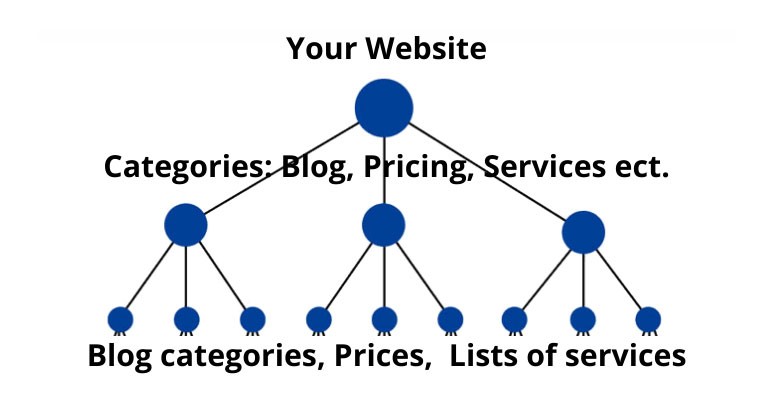
Test your SEO in 60 seconds!
Diib is one of the best SEO tools in the world. Diib uses the power of big data to help you quickly and easily increase your traffic and rankings. We’ll even let you know if you already deserve to rank higher for certain keywords.
- Easy-to-use automated SEO tool
- Keyword and backlink monitoring + ideas
- Speed, security, + Core Vitals tracking
- Intelligently suggests ideas to improve SEO
- Over 500,000k global members
- Built-in benchmarking and competitor analysis
Used by over 500k companies and organizations:
Syncs with 
Submit Your Site Through Google Search Console
Before you can submit your site through Google Search Console, you need to have a Google account. If you’ve registered for one of Google’s services before like Gmail or YouTube, then you have an account.
You Might Also Like
If you have just created a new site and are ready to submit it to Google, you will need to go to Google Search Console and verify your ownership. There are a couple of ways to verify your ownership, and Google will walk you through the process.
Next, inside the Search Console, you will find an option to submit your sitemap. Your sitemap URL is usually https://www.websitedomain.com/sitemap.xml, but you will need to check with your website builder to see precisely where to find it.
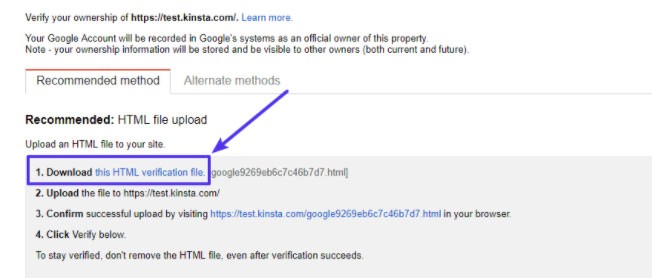
(Image credit: Kinsta)
If you have a website that has already been crawled by Google, it is important that you only resubmit your sitemap if you change something on your site. For example, if you add some new pages and posts or have completely changed your link structure, then you can resubmit your sitemap.
Google explicitly states that submitting your site multiple times when nothing has changed will not get it indexed faster or affect your position in the SERPs (search engine results pages).
If you have an existing website and just need Google to index your new pages, you have a couple of options. You can use the above method to submit an updated sitemap. This strategy is a good idea if you have restructured your site or added several new pages of content.
You can also use URL Inspection as part of seo submit site to search engines. You can find this option in the left menu bar. You can enter the URL from any page on your site, and the results will let you know if it has been indexed. If not, it will give you the option to index it. This is what that page looks like:
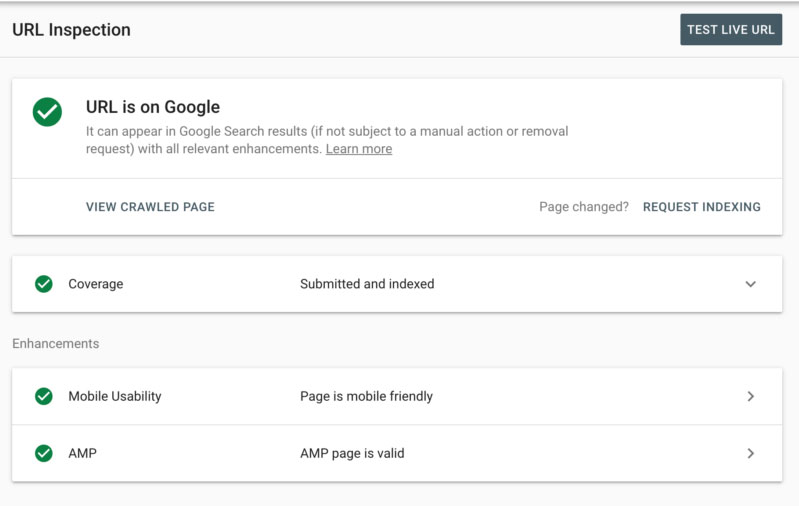
You will also have the option to request indexing if you’ve made changes to the page. Using URL Inspection is a good option if you have a single new post on your site and want to get it indexed as quickly as possible.
Bing
In order to submit a site to Bing, you will first need to create an account with Bing’s Webmaster Tools. From there, you can select Submit My Site. You will then fill out some basic information, including your website URL and your sitemap location.
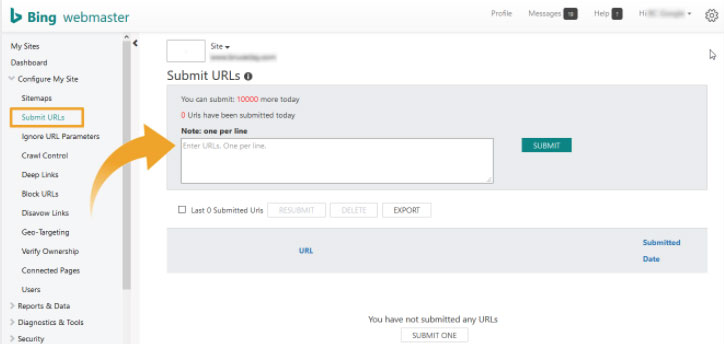
(Image credit: BruceClay)
Yahoo
Yahoo is by far the easiest site to submit to. Since Yahoo uses Bing’s index, once you have submitted it to Bing, you have effectively submitted to Yahoo as well.
How to Submit New Pages Automatically
You may always prefer to go the manual route and make sure that you submit new URLs directly to Google. It is the best way to make sure Google is crawling your site.
But, if you need to speed up your workflow, there are ways to submit new pages automatically if you are using WordPress. For example, the Google XML Sitemaps plugin will create a new sitemap every time you add a page or post. It will then submit the sitemap to Google. Here is that plugin:
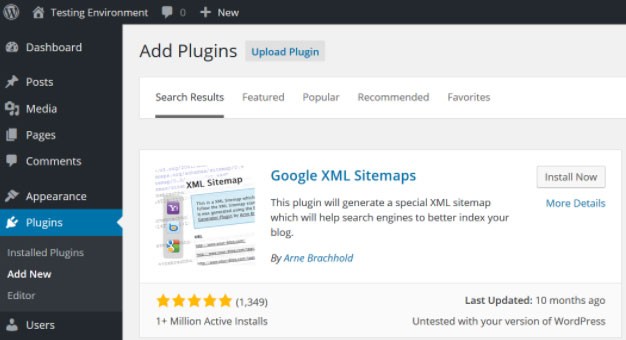
Please note that while this plugin has Google in the name, it is not a Google product. However, it is a free product and has a five-star rating with over two million installs. This is as close as you will get to bulk search engine submission.
You also have the option of doing nothing. Once Google has indexed your site the first time, it’s good about discovering when you have new content.
How to Submit a URL to Google Local Business Results
IF you have a business that offers products or services to the people in your area, you want to make sure you show up in local business results. Many people now search for the name of their town or simply “near me” along with their search times if they are looking for something locally.
While there is no direct way to make sure your business shows up in local search results, your best option is to go to the Google My Business page and enter as much information about your business as possible. Make sure to include your address. Here is what that page would look like:
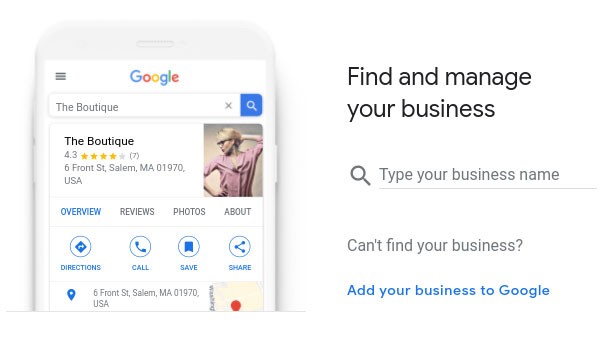
How to Submit Your Site to All Google Services
Google is more than just a general search engine. It also allows for video, image, news, maps and more. If you are putting out a special kind of content, you want to make sure it is showing up on the relevant search pages.
In order to get into Google’s other services, you have to play the long game. It’s not about submitting your site to Google News or getting Google to crawl your YouTube video.
If you want to get on these sites, you have to produce quality content. Following Google’s best practices will also help.
If you want to make it onto the news page, start by publishing at least two articles a day. Make sure your content is original and has an engaging headline.
The rules for YouTube are similar. Publish high-quality content consistently and frequently.
While there are no guarantees that your website will make it onto one of Google’s special services, following these best practices can help you along.
FACT: 57% of SEO experts rank content creation and content marketing as the #1 way to drive the best results in search marketing.
How to Check and See If Your Site Is Listed on Search Engines
Once you have submitted your site to the various search engines, it is easy to see if your site has been indexed. You can go to each search engine and enter the site:yourdomain.com. Make sure not to include any spaces.
The search engine will pull up a list of all the pages of that URL that have been indexed. If one of your pages is not on this list, it has not been indexed.
With Google, you can also go into Search Console and select URL Inspection if you want to check on a specific page of your site. URL Inspection will let you know if the page has been indexed and will also let you know about any errors with the page. Once you have fixed any errors, you can resubmit the page.
How Long Does It Take Google to Rank My Site or URL?
The length of time it can take Google to rank your site or URL depends on many factors. When you publish a website or a new post, it can take anywhere from four days to six months for Google to crawl it. Submitting it directly to Google may or may not help the process along; Google has always been vague about whether submission gets a site indexed faster.
Ranking is different from indexing. Once your site is indexed, it will show up somewhere on Google, but as a business owner, you are concerned with rank. Rank is where your website appears on the list for a given keyword. The closer to the top, the better.
If you have a new site, it can take up to six months for your website to come “out of the sandbox” and start ranking higher in the SERPs. Just simply submitting your site will not get it to rank faster. We will review some of the methods to get your website to rank higher in a section below.
How Search Engines Decide Ranking
Google and other search engines are pretty reticent on exactly how they determine ranking for a website. However, most SEO experts agree that there are a few factors that play a role in how Google decides to rank.
Backlinks
One way that Google has always ranked its search results is through backlinks. Basically, when another site links to your website, it is like a vote for your website. The more backlinks you have, the higher you can rank.
Google has refined this method in the past few years, though, because many websites were abusing the system and content was suffering. Now, it is not just about the number of backlinks you have, but also the quality of your links. A link from a major website like Forbes will help your site much more than a link from a smaller site with low authority.
FACT: 55.24% of pages don’t have a single backlink. The more backlinks a page has, the more search traffic it gets from Google.
User Intent
Google is really trying to rank by user intent. Google’s algorithm attempts to analyze the search terms a user enters to see what type of content the user is trying to find. If a user enters “best running shoes for pavement,” Google wants to return the websites with the best and most relevant information to that topic.
Time on Site
Another significant factor Google considers is the amount of time a user spends on your website. If a user clicks on your site and then quickly clicks back to the search results, that sends a signal to Google that your content is not answering user questions, and Google will begin to rank you lower.
How to Improve Ranking on Search Engines
While there are no exact strategies to guarantee you will move up in the SERPs, there are some methods to have been proven to work.
Quality Content
In the past few years, Google has made a significant push toward ranking quality content. This change means that your content should thoroughly answer a question or cover a topic.
You should also use headers, bulleted lists, videos and other elements to make your content informative and easy to read. Google is also favoring longer-form content, so aim for 1,000 words or more; but make sure it is relevant content, not filler.
FACT: 57% of marketing executives say on-page content development was the most effective SEO tactic.
We hope that you found this article useful.
If you want to know more interesting about your site health, get personal recommendations and alerts, scan your website by Diib. It only takes 60 seconds.
Keywords
Write your content around a keyword. Try to pick a specific keyword, like “baseball glove for left-handed pitchers” instead of something generic like “baseball glove.” It is easier to rank for more specific keywords because there is less competition. Over time, you can start to rank for more competitive keywords.
Make sure you use your keyword in the title, a couple of headers and a few times throughout your article. You can also put the keyword in the alt-text of a few of your images. This keyword usage helps Google understand just what your post is about. Be careful to avoid keyword stuffing, which can cause your website to lose ranking rather than achieve it. This is an example of keyword stuffing:
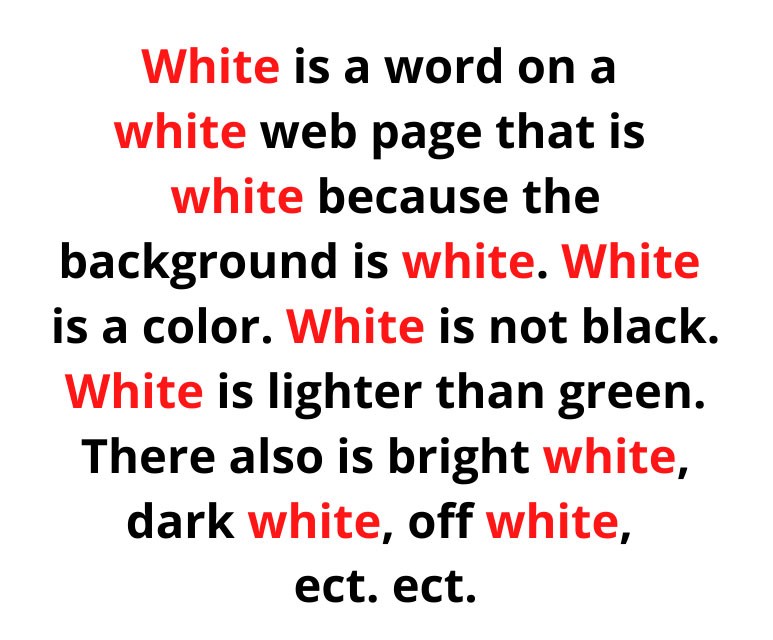
Backlinks
You want to get some backlinks to increase your site’s domain authority. However, you need to make sure that your backlinks are quality and legitimate. The best way to get backlinks is to find websites that relate to your topic and request to write guest posts. You will often be able to get a link back to your site through these posts. Diib offers a backlink checker designed to help you easily and quickly spot bad backlinks and remedy the situation. This screen looks something like this:
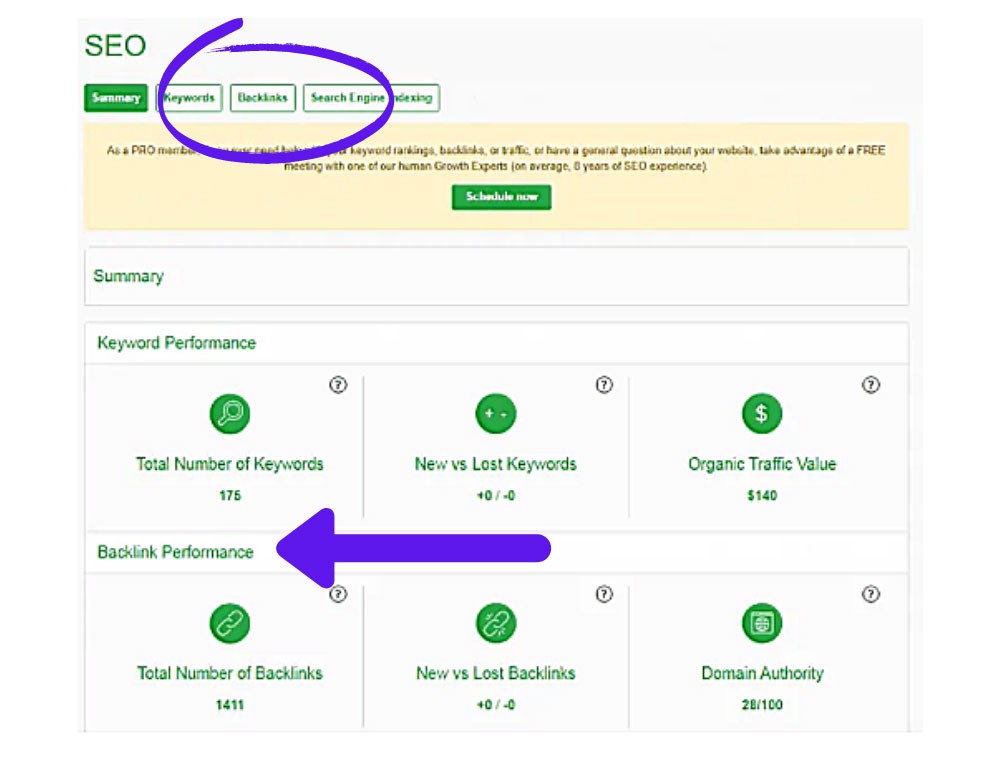
How to Avoid Being De-Indexed
There are several reasons Google may de-index you. Typically, if you are running a legitimate website and trying to put out useful content, you will not get de-indexed. However, you may be doing some things Google doesn’t like.
One of the biggest red flags to Google is keyword stuffing. When you are trying to rank for a keyword, it seems natural that you want to work it into your content as often as possible. However, Google wants quality content, and if you put the keyword in too much, your article will be challenging to read.
You also want to make sure your content isn’t too short and isn’t duplicated throughout your site. You do not need two pages on the exact same topic.
While it may be tempting to purchase backlinks, this is never a good idea. Google wants you to get backlinks the natural way, either through guest posting or others finding and sharing your site. This is what Google has to say about link schemes:

Diib®: Master Search Engine Website Submission!
These methods of SEO submit site to search engines can help get your site indexed by Google and other search engines. By producing quality, helpful content, and following SEO best practices, you can give your website the best chance of ranking in the results pages and getting users to visit your site. Diib’s Growth Team work with companies all over the US and the world, combining custom analytics and targeted metrics, to improve their overall rankings, SEO standing and, ultimately, their profits. Here are some of the features our clients rave about:
- Bounce rate monitoring and repair
- Social media integration and performance
- Broken pages where you have backlinks (404 checker)
- Keyword, backlink, and indexing monitoring and tracking tools
- User experience and mobile speed optimization
- Technical SEO monitoring
Click here for your free scan or simply call 800-303-3510 to speak to one of our growth experts.
FAQ’s
You DO need to submit your website in order for search engines to most effectively crawl your site. However, you don’t have to be a professional. Most search engines have ways of manually submitting your web pages directly to their index.
Although it varies, it can take as little as 4 days and up to 6 months for a site to be crawled by Google and attribute authority to the domain. When you publish/submit a new blog post, site page, or website in general, there are many factors that determine how quickly it will be indexed by Google.
In order to see your website, Google needs to find it. Eventually, Google will discover your site. The Googlebot periodically crawls the web, When you create a website, Google will discover it eventually. As the bot crawls the web, it discovers websites and gathers relevant information on those websites. Then it indexes that information.
A web crawler, or spider, is a type of bot that’s typically operated by search engines like Google and Bing. Their purpose is to index the content of websites all across the Internet so that those websites can appear in search engine results.
Web scraping and crawling aren’t illegal by themselves. After all, you could scrape or crawl your own website, without a hitch. Big companies use web scrapers for their own gain but also don’t want others to use bots against them.
The submitFISH provides you with the possibility to submit your web site URL to 50+ search engines for free. For bulk submissions a small service fee is charged: Here you can purchase a key for the submission of up to 100 URLs at once. The service is designed for everybody having a website.




NatashaK5992 says:
Revolutional update of captcha solution package “XRumer 19.0 + XEvil 5.0”:
Captchas recognition of Google (ReCaptcha-2 and ReCaptcha-3), Facebook, BitFinex, Bing, Hotmail, SolveMedia, Yandex,
and more than 12000 another categories of captchas,
with highest precision (80..100%) and highest speed (100 img per second).
You can use XEvil 5.0 with any most popular SEO/SMM software: iMacros, XRumer, SERP Parser, GSA SER, RankerX, ZennoPoster, Scrapebox, Senuke, FaucetCollector and more than 100 of other software.
Interested? There are a lot of introducing videos about XEvil in YouTube.
Free XEvil Demo available.
See you later!
Sayful Islam says:
Usually, I never comment on blogs but your article is so convincing that I never stop myself to say something about it. You’re doing a great job Man, Keep it up.
News Grig says:
This is a completely useful article. Hope its help all the newcomer/new website builder. we want more articles like this.
isgiftery says:
thanks you share the links
Rahul T reviews says:
You have really explained the search engine ranking factor very well. Continue post like this.
platinum-electrical says:
this is a great submission
platinum-electrical says:
the great submission